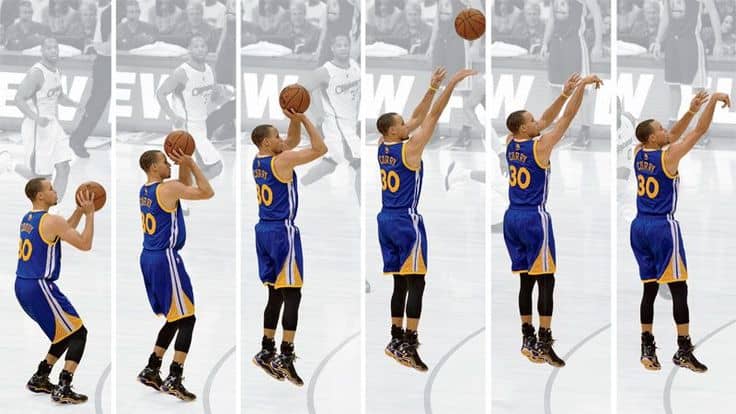Have you ever observed how certain basketball teams appear to have an invincible defensive wall? Well, there’s more to it than just having a star shot-blocker or a point guard with lightning-fast reflexes. Both players and coaches work hard on strategies throughout the year so they can also tailor-fit their moves based on their opponents.
Creating these strategies is a difficult task, particularly in the early days when teams were forced to rely solely on gut feeling and scant information without the assistance of contemporary technology. However, it still takes a great deal of commitment, keen analytical abilities, and endless practice hours even with the aid of the newest sports technology.
Now, even fans and bettors can also benefit from understanding defensive techniques as these can provide valuable insights and basketball betting tips. Knowing which teams excel in particular defensive strategies can simply help you improve your predictions.
Table of Contents
Defensive Strategies in the Early Days
During the 1940s and 50s, defensive tactics used in basketball were rather basic by today’s standards. The preferred strategy was man-to-man defense, in which each player was in charge of protecting a particular opponent. The key elements of this straightforward tactic were individual defensive skill and stamina. Sticking close to your guy, blocking easy shots, and willpower to defend the ball against another player were the main points of this strategy.
Zone defenses, where players cover specific areas of the court rather than individual opponents only started gaining popularity in the 1950s and 60s.
Common Types of Defense Strategies in Basketball
Although impressive three-pointers and high-flying dunks frequently steal the show, it can be agreed that defensive play determines whether a basketball game is won or lost. The momentum of a game can be determined by a strong defense, and contemporary defensive tactics are more complex than mere gut feeling. Let’s have a look at the most popular and effective defensive strategies used by basketball teams today:
Man-to-Man Defense
For this, each defender is responsible for an opposing player, so before matches, they’re already given an assignment on who to watch out for. This allows for intense pressure and forces the offense to work hard for every shot.
Man-to-man tactics have been used successfully by teams like the San Antonio Spurs, who are renowned for their rigorous defense, to win titles. One of the players who stood out during the Spurs’ successful years was Kawhi Leonard, who also demonstrated the significant influence of a well-played man-to-man defense. Leonard’s defensive play was crucial to the Spurs’ triumph against the Miami Heat in the 2014 NBA Finals. He even got the Finals MVP award for his efforts, which included his successful attempts to neutralize LeBron James.
Zone Defense
Instead of focusing on certain players, zone defense is about defending designated sections of the court. This tactic works well for preserving paint and thwarting offenses that mainly depend on individual skill. In the 2011 NBA Finals, the Dallas Mavericks notably neutralized the Miami Heat’s all-star lineup using a zone defense, mostly executed nicely by Dirk Nowitzki.
Combination or Junk Defense
In essence, combination or “junk” defense combines zone and man-to-man strategies. A box-and-one defense, for instance, puts four players in a zone and designates one defender to shadow the star player of the opposition. In the 2019 NBA Finals, the Toronto Raptors used a box-and-one defense against Stephen Curry, effectively reducing his impact and winning their first-ever title.
Press Defense
Press defense is when players start pressuring the other team as soon as they get ahold of the ball. This strategy can be executed as a full-court or half-court press. A full-court press means defenders cover the entire length of the court. Meanwhile, players only start applying pressure to the opponents once the ball crosses the midcourt on a half-court press defense.
Technological Advancements and How It Impacts Team Defensive Strategies
Beyond the Xs and Os, technology is becoming more and more significant in determining defensive tactics. Coaches can now analyze opponent patterns, identify weaknesses, and modify their defensive strategies based on data thanks to the newest technology.
Here’s a quick overview of the latest techs teams are now using to improve their strategies:
Player Tracking Systems (e.g., SportVU): In order to better understand player behavior and identify areas for improvement, player tracking systems such as SportVU use cameras and sensors to record players’ movements in real time.
Advanced Analytics Platforms (e.g., Synergy Sports): Advanced analytics platforms, like Synergy Sports, provide clubs with comprehensive statistical data and aid in assessing the efficacy and performance of their defense.
Wearable Technology (e.g., GPS Trackers, Heart Rate Monitors): Provides data on players’ physical conditions that can be useful in managing fatigue and preventing injuries.
Conclusion
Basketball defensive strategies have surely come a long way, and we can only wait and see how these tactics will continue to change with more technologies being used. One thing’s for sure, a solid defensive strategy can surely help a team bring the trophy home.










